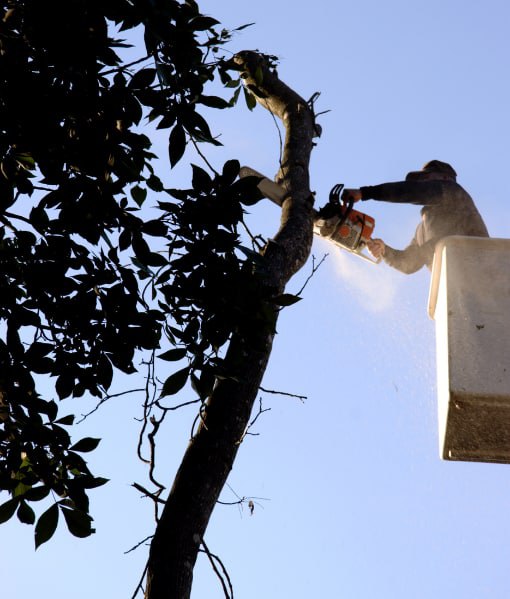Hedges are more than just boundary markers—they’re living, growing features that can offer privacy, structure, and visual appeal to any garden or outdoor space. But left unchecked, a hedge can become unruly, lose its shape, or even outgrow its purpose. This is where hedge training and correct cutting techniques come into play. For property owners in New Romney, Kent, understanding how to manage and train a hedge is essential—and it’s something the team at New Romney Tree Surgeons specialises in.
What Does It Mean to Train a Hedge?
Training a hedge refers to the practice of encouraging a hedge to grow in a desired shape, height, and density through careful and regular cutting. Whether you’re aiming for a formal clipped line or a more natural look, proper training from an early stage lays the foundation for a healthy, manageable hedge.
Training isn’t limited to newly planted hedges—mature hedges can also be reshaped over time with the right care and pruning strategy.
How Cutting Supports Hedge Training
Hedge cutting is the most effective tool in shaping and maintaining a healthy hedge. When done properly, it promotes denser growth, keeps the structure neat, and prevents the hedge from becoming top-heavy or sparse.
Benefits of Strategic Cutting
- Encourages Bushier Growth
Cutting back the tips of shoots stimulates lateral growth, filling out gaps and creating a more compact hedge. - Prevents Overshadowing and Overgrowth
Regular cutting keeps the hedge within its intended boundaries, ensuring it doesn’t dominate your garden or obstruct paths and windows. - Improves Airflow and Sunlight Penetration
Thinning cuts allow more light and air to reach the centre of the hedge, reducing the risk of fungal diseases. - Supports Shape and Structure
Repeated shaping cuts help establish and maintain the intended form of the hedge, whether it’s straight, curved, or even topiary. - Promotes Longevity and Health
Removing dead, damaged, or diseased branches supports healthier growth and prevents decay from spreading.
Techniques for Training Different Types of Hedges
Not all hedges respond the same way to pruning, and the approach will vary depending on whether you’re dealing with a formal or informal hedge, deciduous or evergreen species.
Formal Hedges
Species like box, yew, and privet are ideal for tight, geometric forms. These hedges benefit from:
- Frequent light trims throughout the growing season
- Tapering sides (wider at the base) to allow even light distribution
- Clean, sharp cuts to prevent tearing of leaves or bark
Informal Hedges
Hedges such as hawthorn, beech, or hazel require a more relaxed approach:
- Light pruning once or twice a year
- Retaining natural form while removing unwanted branches
- Selective thinning to maintain internal health
Young Hedges
Early-stage pruning is critical for setting the framework of a healthy hedge. This involves:
- Cutting back the first season’s growth by about one-third
- Removing weak or misplaced shoots
- Encouraging a dense, balanced structure from the base upwards
When Should You Cut a Hedge?
Timing is key when training a hedge. Cutting at the wrong time can stunt growth or disturb nesting birds. In general:
- Evergreen hedges are best cut in late spring and again in late summer if needed.
- Deciduous hedges should be pruned during the dormant season (late winter) and lightly trimmed in summer.
- Avoid major hedge work between March and August to protect wildlife during the nesting season.
If in doubt, professional advice can ensure compliance with local regulations and best horticultural practice.
Why Use a Professional Hedge Cutting Service?
Training a hedge successfully requires more than a pair of shears. For homeowners in New Romney, Kent, New Romney Tree Surgeons offers expertise in all aspects of hedge management, including:
- Identifying species-specific pruning needs
- Developing long-term training plans
- Ensuring clean, safe, and environmentally sensitive work
- Restoring neglected or overgrown hedges
With the right care, even the most untidy hedge can be brought back into shape and thrive for decades.
Conclusion
Yes, you can train a hedge—and regular, strategic cutting is the key to success. Whether you want a sculpted, formal border or a soft, natural screen, early intervention and ongoing maintenance make all the difference. For expert hedge cutting and training in New Romney, Kent, New Romney Tree Surgeons is here to help you shape a healthier, more attractive garden feature.
If your hedge needs professional attention or a fresh start, contact New Romney Tree Surgeons today to discuss your options and book a site visit.
Call us on: 01797 334532
Click here to find out more about New Romney Tree Surgeons
Click here to complete our contact form and see how we can help with your trees needs.
